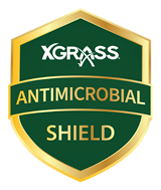The Cost of Installing Playground Turf
for Commercial Playgrounds
When calculating the cost of installing artificial grass safety surfacing for a commercial playground, it’s important to note that there are a number of key factors to consider. Just as those specifying synthetic turf athletic fields must consider how the turf will affect performance and safety, specifying and installing playground turf requires special consideration related to shock attenuation, ADA compliance, and resistance to heat, static and microorganisms.
7 Key Factors
Affecting the Cost of Installing Playground Turf
ASTM International is the organization that has developed the technical standards that specify the performance criteria, test methods and safety guidelines related to commercial playground surfacing. These can be found in ASTM F1292. Suppliers' compliance with these guidelines is certified by the International Playground Equipment Manufacturers Association (IPEMA).
With that understanding, here are the 7 key factors affecting the cost of artificial grass safety surfacing for an IPEMA Certified commercial playground surface.

1- Design & Specifying
It is extremely important to note that the design and specification of playground turf involves a complete system. In fact, the International Playground Equipment Manufacturers Association does not necessarily certify turf, it certifies Playground Turf Systems.
Turf Systems include not just artificial grass, but also the shock pad, infill and sub-base materials.
For example, XGrass Prime was developed and engineered specifically for the commercial playground market. It includes features to protect against heat, shine, static and microorganisms and has established itself as the leading playground turf in the market.
Shine Block™
Shine Block™ blade profiles reduce the reflective quality of the fiber allowing our grass to appear more like a healthy, well-trimmed, natural lawn.
Heat Block™
With Heat Block™ color options, our turf is cooler than the competitors' artificial grass systems.
When specifying the shock pad and infill, one must consider the sub-base upon which the playground turf will be installed. In most cases, a sub-base of compacted, clean aggregate stone is ideal, but for playgrounds mounted on concrete or asphalt surfaces, options are still available.

Installation Cross Section
Over Aggregate Base with Concrete Border
Our most popular installation for playgrounds features one of our playground turf products and PolyGreen padding installed on top of a base of compacted clean aggregate stone.
When installed with a concrete border, the turf is nailed or stapled into pressure treated support boards and then infilled to eliminate any movement or shifting of the turf. The infill and padding combine to provide the impact attenuation properties ideal for making a play area safer.
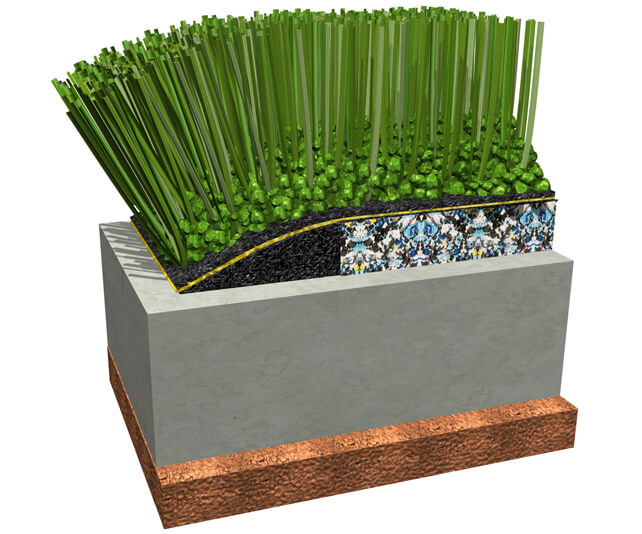
Installation Cross Section
Over Concrete Base with SBR Ramp Edge
For playgrounds placed over concrete bases, the surfacing installation consists of our XGrass playground turf along with Envirofill infill and PolyGreen foam padding. The infill and padding combine to provide the impact attenuation properties ideal for making a play area safer.
An SBR edge ramp can be installed to meet ADA compliance and provide a smooth transition from the concrete base to the playground surface.
The shock padding that is placed over the sub-base can have a major impact on the overall cost of the project as well. It is also important to note that not all foam padding performs in playground surfacing environments. The Recreational Group’s Polygreen foam padding was designed specifically for commercial playground applications and comes in various densities and thicknesses.
Finally, the infill specified can also play a key role in the safety and performance of the surfacing. The XGrass Certified Playground Turf System features Envirofill, a performance infill featuring Microban antimicrobial protection and natural heat-reducing properties.
2- Supplier Selection
While there are thousands of turf installation companies in the country, most companies focus on installing grass lawns and landscapes that have virtually no liability concerns.
When installing playground turf for a commercial playground, you want an installation partner that is not just familiar with the industry’s guidelines, but one with proven experience.
At XGrass, our experienced playground turf installation crews have installed thousands of commercial playgrounds over the last two decades and are the chosen suppliers for most of the leading preschool operators in the USA.
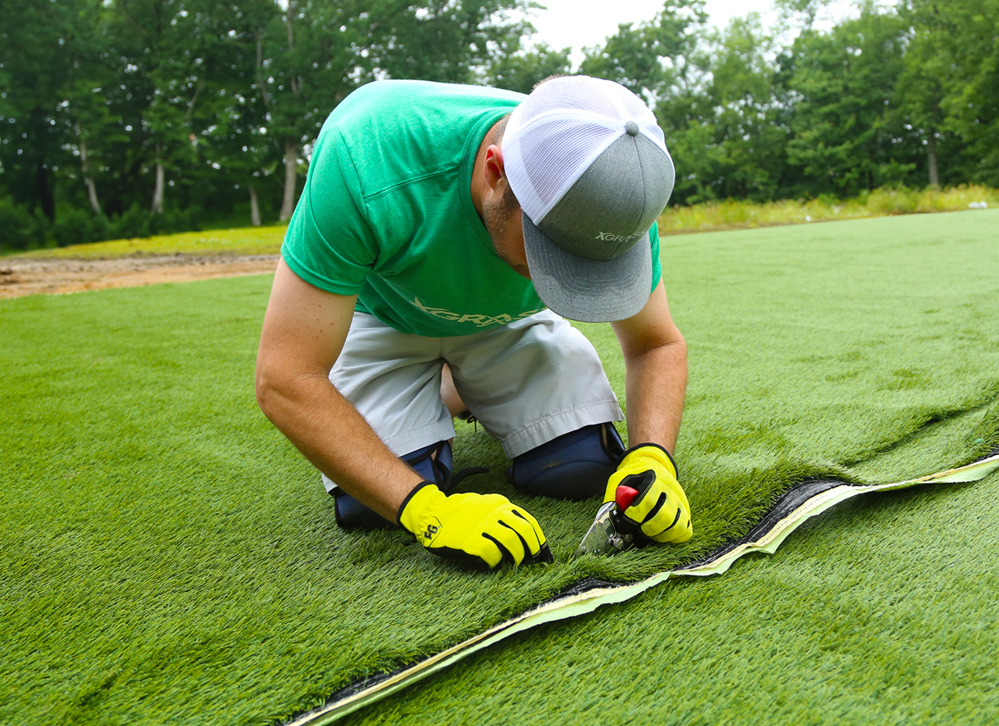
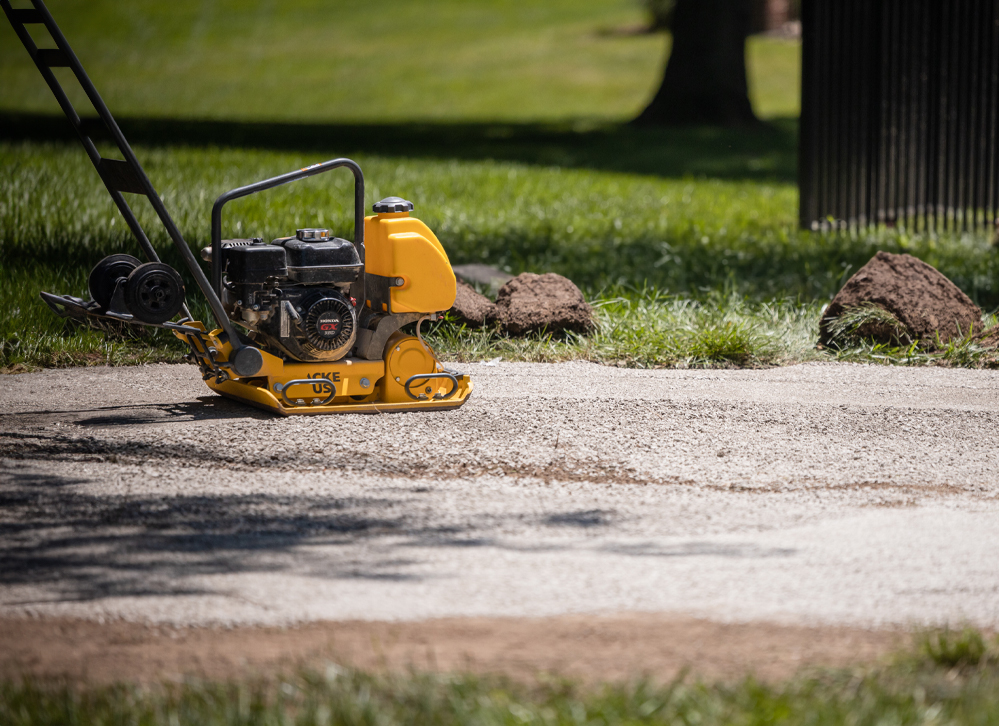
3- Sub-Base Preparation
As noted earlier, most artificial grass playground surfacing installations will require the installation of a compacted, aggregate stone sub-base. In most cases, the construction of this base will represent a significant percentage of the overall cost of the turf installation project depending upon the complexity.
- Excavation of 6+ inches of native soil and then compaction of the area which may include:
- Cost of labor
- Cost of equipment rental
- Cost to transport soil away from jobsite
- Placement of geotextile barrier (weed barrier)
- Cost of labor
- Cost of weed barrier
- Adding an aggregate stone base of 4 inches compacted 95%, with 3 ¼” of ¾ clean and 1” of screenings.
- Cost of crushed rock including transportation to site and movement to area.
- Labor to move, spread, and compact crushed rock.
- Cost of equipment to move and compact rock.
4- Prepared Base Construction
Once the sub-base is constructed, one will need to prepare the bender boards for the perimeter of the space, add drainage panels (if desired) and smooth out the gravel.
- Cost of bender boards, stakes, edging and fasteners
- Cost of labor to construct
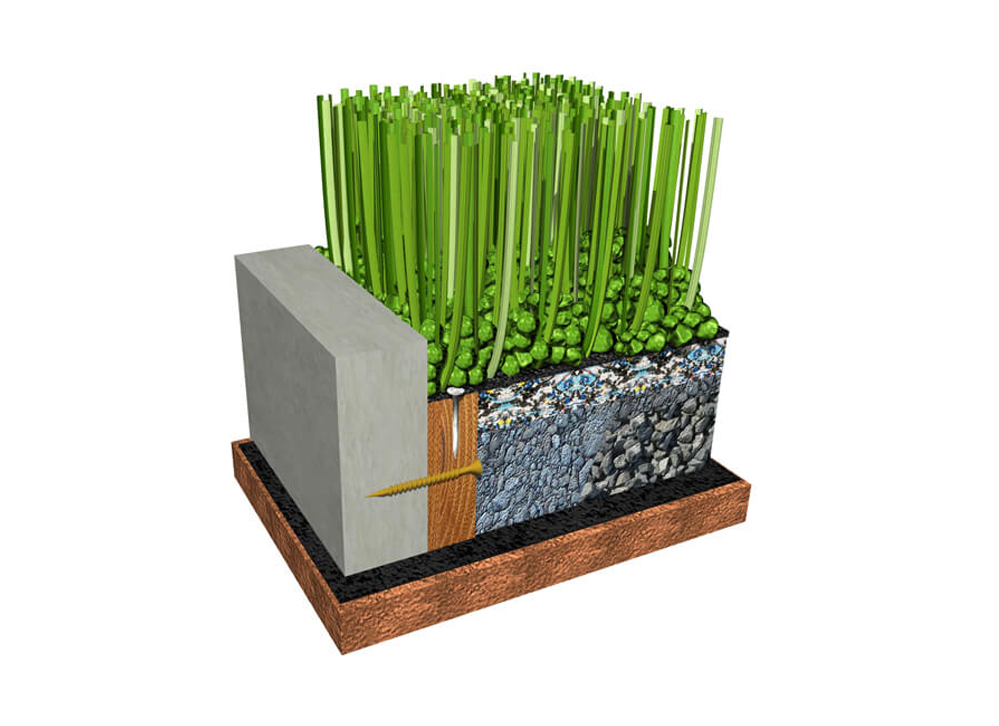
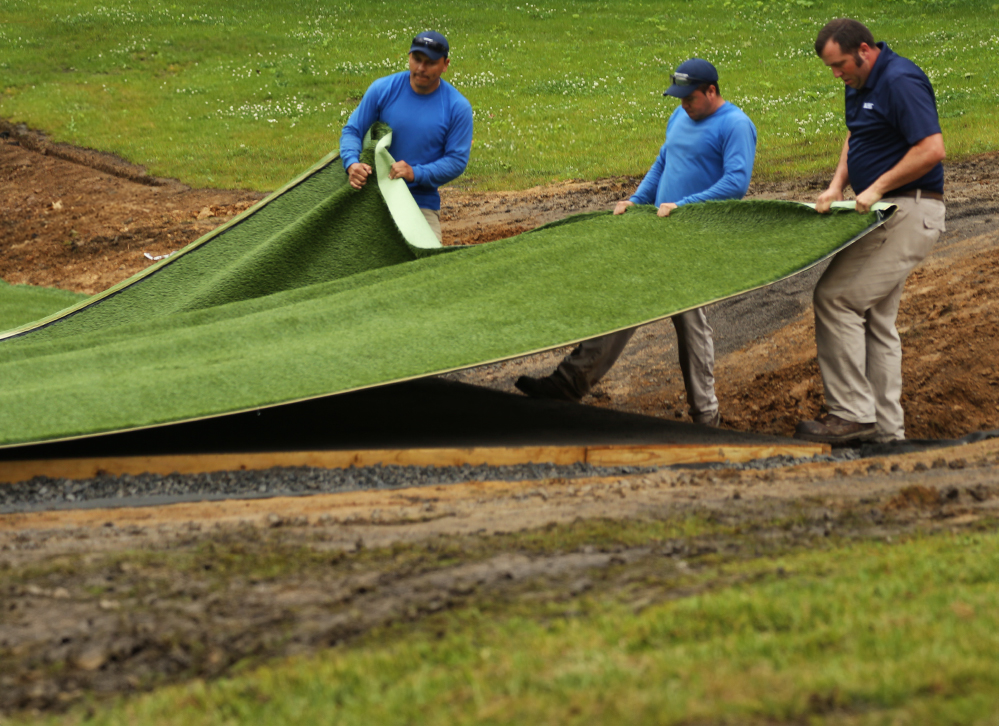
5- Artificial Grass Installation
With the base totally prepared, the next set of costs to estimate are for the turf.
- Calculate the amount of artificial grass that will be required and multiply by its cost per square foot. In most cases, the playground turf of choice will be XGrass Prime. This turf leads the industry due to its combination of features, proven performance and excellent value. Also account for the waste and enough turf to cover the nail boards.
- Calculate the amount of seam tape, glue, and fasteners that will be needed.
- Estimate labor costs for laying, stretching, cutting, seaming and adhering the grass to base.
- Costs for tools and equipment to move, stretch and staple the grass.
- Calculate the amount of infill needed.
- Estimate the costs to spread the infill and brush it into the fibers.
6- Maintenance & Care
While the ongoing maintenance and care of playground turf is not technically part of the installation cost, a properly installed playground turf system installed by an experienced team can yield a lower total lifetime cost. This is not just in comparison with playground turf solutions from other suppliers, but even compared to traditional loose-fill surfaces.
With a long life expectancy and minimal maintenance requirements, XGrass playground turf systems often have a very competitive lifetime cost when compared to "properly maintained loose-fill surfaces." The system performs consistently and can be used in almost any weather.
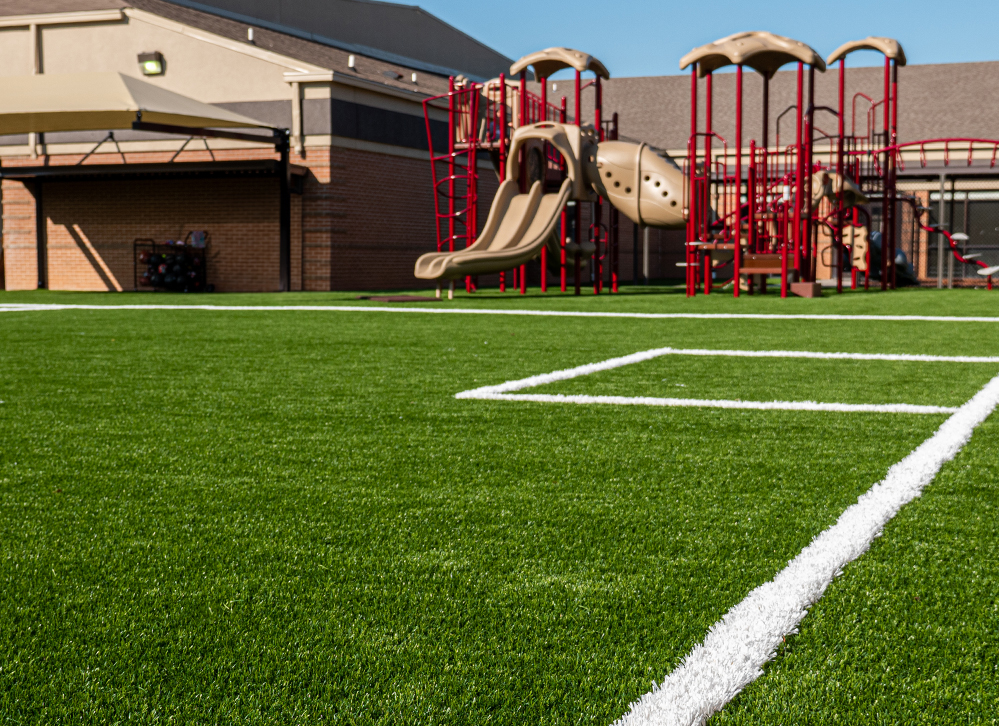
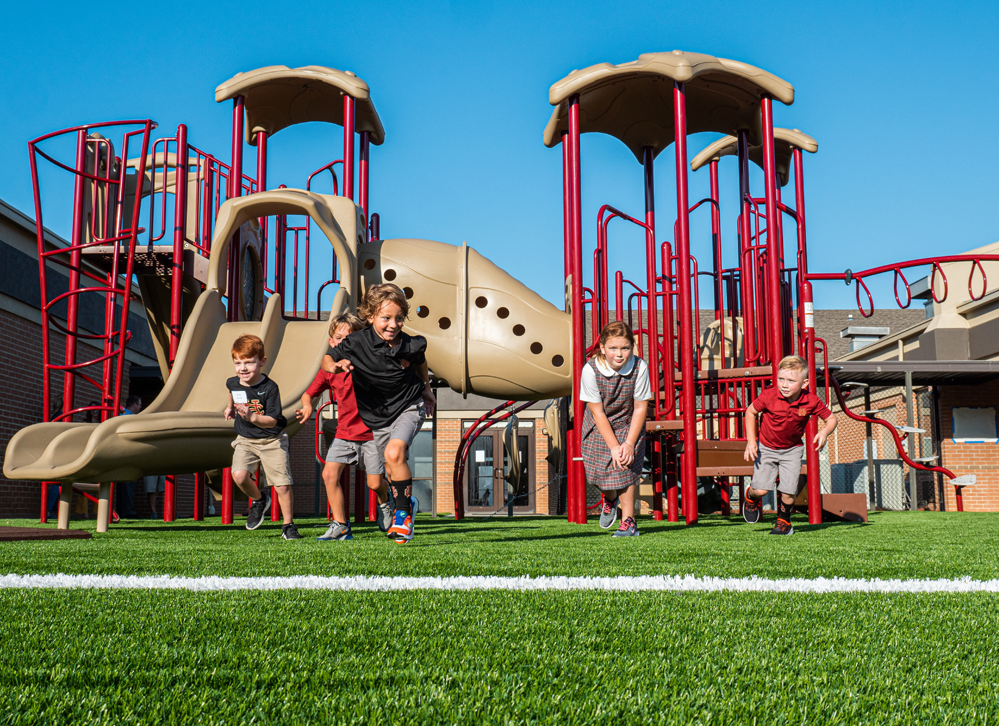
7- Safety & Compliance
Even though it is difficult to assign a direct monetary benefit to safety and compliance, one should consider the costs involved to ensure that the chosen playground turf and supplier will deliver a solution that will truly protect the children and comply with industry standards for safety, performance and accessibility.
At XGrass, we are committed to this mission. We manufacture and install feature-rich, playground turf systems that not only protect children but provide playground owners with peace-of-mind. And, we do it in a cost-effective manner.



